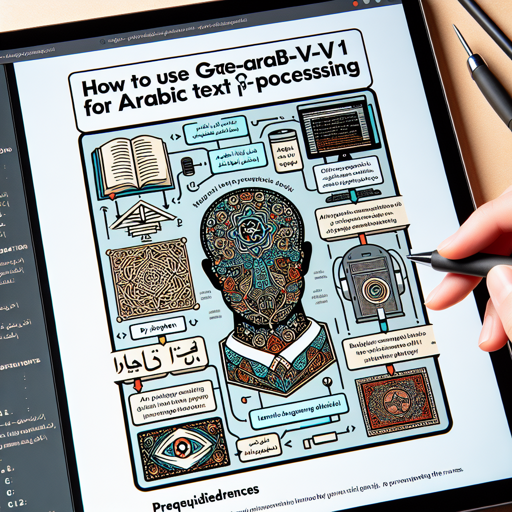With artificial intelligence making waves in various sectors, the ability to analyze text efficiently, especially in Arabic, is crucial. One of the standout tools for this task is the GATE-AraBert-v1 model. This guide will take you through utilizing this powerful sentence transformer, complete with installation instructions, usage examples, and troubleshooting tips.
Understanding GATE-AraBert-v1
The GATE-AraBert-v1 model is based on the sentence-transformers library and is specifically designed for Arabic text. Think of it as a sophisticated translator that not only translates words but understands their context, much like a language-savvy friend who doesn’t just speak Arabic but deeply understands the nuances of the language.
Prerequisites
- Python (version 3.6 or later)
- Access to a terminal or command line interface
- Basic knowledge of Python programming
Installation Steps
Follow these simple steps to get GATE-AraBert-v1 up and running:
- Open your terminal or command line interface.
- Install the Sentence Transformers library by entering:
- Now, you’re ready to load the model and start processing Arabic sentences!
pip install -U sentence-transformersUsing GATE-AraBert-v1
After installation, you can run the following code to encode sentences and evaluate their semantic similarity:
from sentence_transformers import SentenceTransformer
# Download the model
model = SentenceTransformer("Omartificial-Intelligence-Space/GATE-AraBert-v1")
# Define sentences
sentences = [
'الكلب البني مستلقي على جانبه على سجادة بيج، مع جسم أخضر في المقدمة.',
'لقد مات الكلب',
'شخص طويل القامة',
]
# Generate embeddings
embeddings = model.encode(sentences)
print(embeddings.shape) # [-batch_size, 768]
# Get the similarity scores for the embeddings
similarities = model.similarity(embeddings, embeddings)
print(similarities.shape) # [batch_size, batch_size]In the analogy of a chef cooking a sumptuous dish, each sentence acts like an ingredient that combines to create a tasty dish (or, in this case, useful embeddings) where the model evaluates how well they blend together.
Understanding Evaluation Metrics
Once you’ve generated the embeddings, it’s essential to quantify their accuracy with metrics like Pearson and Spearman correlation coefficients. Here are key metrics to keep in mind:
- Pearson Cosine: Measures linear correlation between the variables.
- Spearman Cosine: Assesses how well the relationship between two variables can be described using a monotonic function.
- Manhattan & Euclidean Metrics: Calculate distances in embeddings space, giving you a sense of similarity.
Troubleshooting Common Issues
Even experienced developers run into bumps along the journey. Here are some common issues and fixes:
- Error on model loading: Ensure that you have a stable internet connection as loading from the Hugging Face model hub requires it.
- Dependency issues: Make sure that you are using the latest version of the Sentence Transformers library.
- Performance lag: Check your system’s RAM and CPU usage; larger datasets may require more computational power.
For more insights, updates, or to collaborate on AI development projects, stay connected with fxis.ai.
Conclusion
By following these steps, you can effectively utilize the GATE-AraBert-v1 model for Arabic text processing. This tool can be a game-changer in understanding and interpreting the Arabic language in various applications. At fxis.ai, we believe that such advancements are crucial for the future of AI, as they enable more comprehensive and effective solutions. Our team is continually exploring new methodologies to push the envelope in artificial intelligence, ensuring that our clients benefit from the latest technological innovations.

